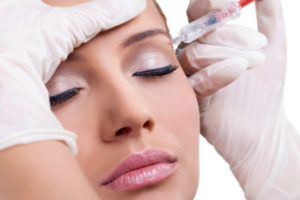Botox Was A Thing Before You Ever Heard About It
 There’s a current little ditty that asks the question, “Is it a thing?” about certain trendy stuff.
There’s a current little ditty that asks the question, “Is it a thing?” about certain trendy stuff.
You could ask if Botox was a “thing” and the answer would be a monstrous YES! After all, ever since the FDA approved Botox for the treatment of facial wrinkles on the upper third of the face in 2002, the injectable has gone crazy! Every year it is far and away the most popular cosmetic procedure, surgical or non-surgical, in the world. It’s not even close.
But that’s today’s Botox beating up on your crow’s feet and the 11s between your brows. Truth be told, Botox was a thing long before then, just not for your wrinkles. Botox was working in other areas of human health long before it took on crow’s feet. Here are some additional facts about Botox.
The origins or Botox
Now that Botox is one of the world’s most well-known brand names, most people have some idea that the wrinkle killer has some relationship to the botulism toxin. Clostridium botulinum is the name of that very organism that leads to botulism. And the botulinum toxin type A is what Botox basically is (along with a few other proteins). Although this would freak out any clean freak, these bacteria can be found in their inactive form all through the natural environment, including in cultivated soil and in forest soil, and in the sediment of lakes, streams, coastal and untreated waters. Maybe that’s why your Mom told you never to eat dirt!
Medicinal uses
Botox is no stranger to the medical world; it has been used medicinally for decades. After it was found that the botulinum toxin type A, when injected in very small amounts, could make muscles temporarily stop contracting it was tried in various capacities. It is now used for the following therapeutic applications:
- Blepharospasm (involuntary eyelid spasms)
- Strabismus (crossed eyes)\
- Idiopathic rotational cervical dystonia (severe neck and shoulder muscle spasms)
- Chronic migraine headaches
- Hemifacial spasm
- Severe primary axillary hyperhidrosis (excessive sweating)
- Post-stroke upper limb spasticity
- Urinary incontinence
- Overactive bladder
It is also used “off-label” for:
- Achalasia (esophageal problems creating difficulty swallowing)
- Sialorrhea (hypersalivation)
- Allergic rhinitis
- Hepatopancreatic dysfunction
- Cerebral palsy
- Oromandibular dystonia (forceful contraction of the jaw, face, and/or tongue)
- Laryngeal dystonia (forceful contraction of the vocal cords)
More about Botox
More than six million Botox treatments are given each year, far and away the most of any cosmetic procedure of any type.
Although Botox is by far the most popular brand, the botulinum toxin is also sold commercially under these other brand names: Vistabel, Dysport, Bocouture, Xeomin, and Myobloc.
Do you want to become a member of Botox’s fan club? Call Dr. Shams to make an appointment.
Posted in: Botox


